- Home
-
Our tours
- Our tours
- Africa
- Asia
- Latin America
- North America
- Oceania
- Holiday types
-
Accommodation
- Accommodation
- Africa
- Asia
- Latin America
- North America
- Oceania
-
Practical info
- Practical info
- Africa
- Asia
- Latin America
- North America
- Oceania
- Info & contact
- Blog
7 things to do in Zanzibar (that are NOT the beach)
15.10.2023When you think of Zanzibar in Tanzania, you likely picture its white sandy beaches and crystal-clear turquoise waters.
And while the many beautiful beaches are undeniably what captivates travellers most, Zanzibar offers more than just sun, sea, and sand.
With its rich culture and history, the island boasts a range of unique experiences. Here are our top things to do during a Zanzibar holiday that doesn’t involve lounging on the beach.
1. Discover Stone Town
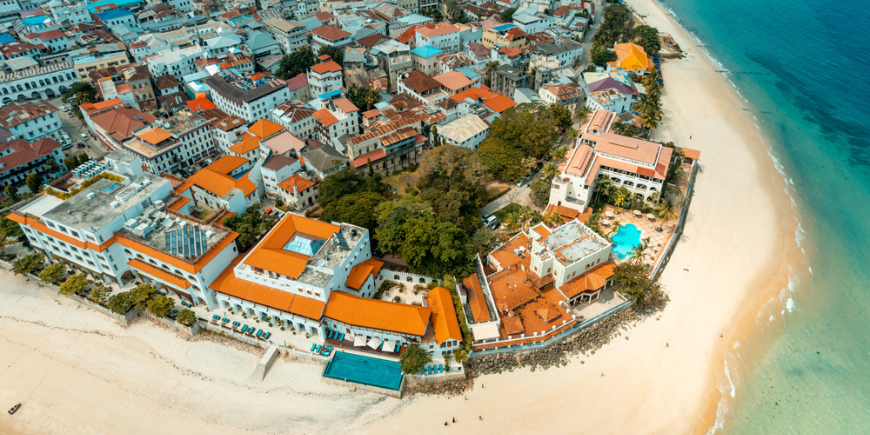
Old coastal trade village and UNESCO World Heritage Site, Stone Town is a time capsule of history and the cultural heart of Zanzibar. Stone Town’s captivating architecture exudes a distinctive old-world charm that is unique in Africa. Mainly dating from the 19th century, the buildings reflect a fascinating fusion of Swahili, Arab, Indian, Persian, and European influences.
You can spend hours exploring its historic winding alleys and hidden courtyards; every corner reveals a new and exciting hidden gem. Once your legs tire from exploring, you can enjoy the lively local ambience by relaxing in a café, where you can unwind and witness the bustling fishing boats in action.
For music aficionados, Stone Town holds a special place as the birthtown of the legendary Freddie Mercury. You can pay homage to the iconic rock star by visiting the Freddie Mercury Museum, a must-see destination for fans of Queen and its charismatic frontman.
2. Meet the red monkeys of Jozani Forest

For an unforgettable encounter with nature, you can visit Jozani Forest, situated within Jozani Chwaka Bay National Park. It stands as the largest expanse of woodland on the island and is most known for sheltering the rare and endangered red Colobus monkeys, endemic to Zanzibar’s main island.
You can explore the forest’s nature trails and boardwalks with a local ranger to spot these charming primates, easily identifiable by their distinctive vibrant coats, agile tree-leaping, and playful tail-balancing antics.
While the red Colobus monkeys are the star attraction, amidst the forest’s lush canopy, you can also encounter over 50 species of butterflies and be serenaded by the calls of more than 40 different bird species, including the great hornbill.
3. Taste the island’s spices
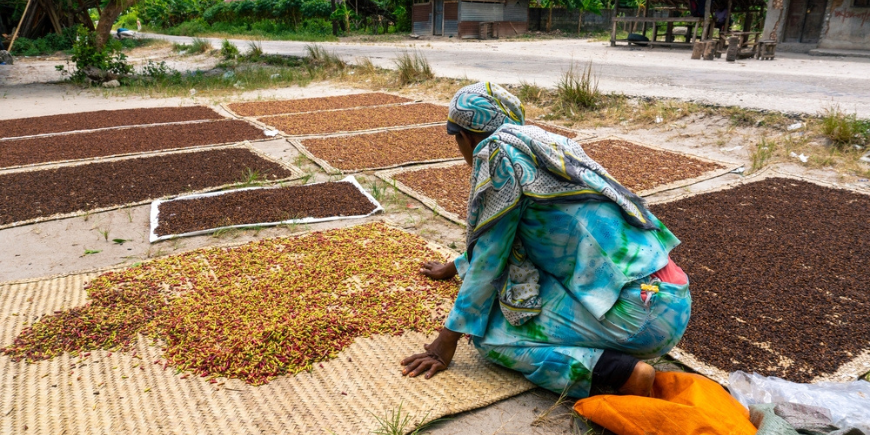
Zanzibar is known as the The Spice Island of Africa. For centuries, spices have played an integral role in shaping its identity as a thriving trading hub.
During the 16th and 17th centuries, Portuguese traders first introduced them to the island from their voyages to India and South America. Spices such as nutmeg, cloves and cinnamon found fertile soil and a welcome climate in Zanzibar.
Nowadays, it is possible to go on spice tours where you can engage your senses by smelling, touching and tasting a variety of spices and fruits. A visit to the villages of Kizimbani and Kinchi is a must, where you can learn about diverse spices such as turmeric, vanilla, cardamom, chilli, saffron, lemongrass and black pepper. It’s a great chance to gain insights from locals about how they are grown and how they can used in cooking and traditional medicine.
4. Learn about Zanzibar’s painful past
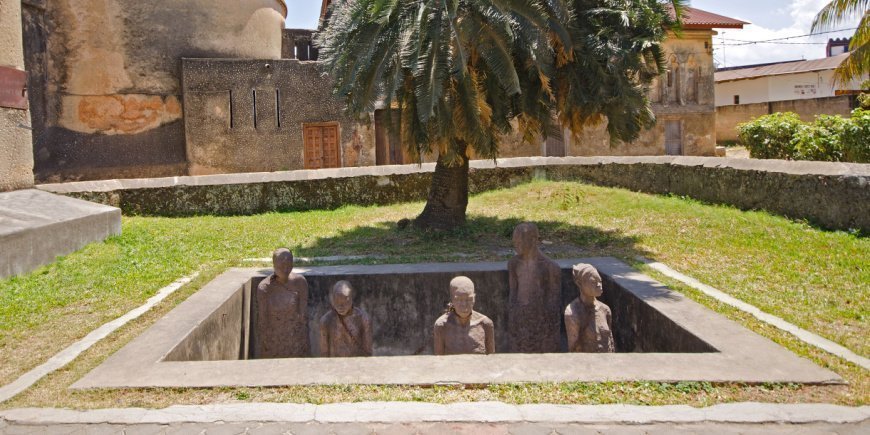
Zanzibar’s history also bears the weight of a sombre and tragic chapter, and the island was once a centre for the captivity and trade of slaves. During the peak of this period, 50,000 Africans were traded annually at the colossal slave market in Stone Town.
To gain a deeper understanding of this brutal history, consider a visit to the Old Slave Market and Anglican Cathedral, both now transformed into a museum and memorial.
The site was once the epicentre where slaves were bought and sold, consisting of several interconnected structures, including slave chambers, a market square, and holding pens.
The preservation of this area serves as a powerful reminder of the inhumanity endured during this period. We strongly recommend enlisting the expertise of a guide, as they can offer invaluable insights into the complex and painful history.
5. Feast at the night market at Forodhani Gardens
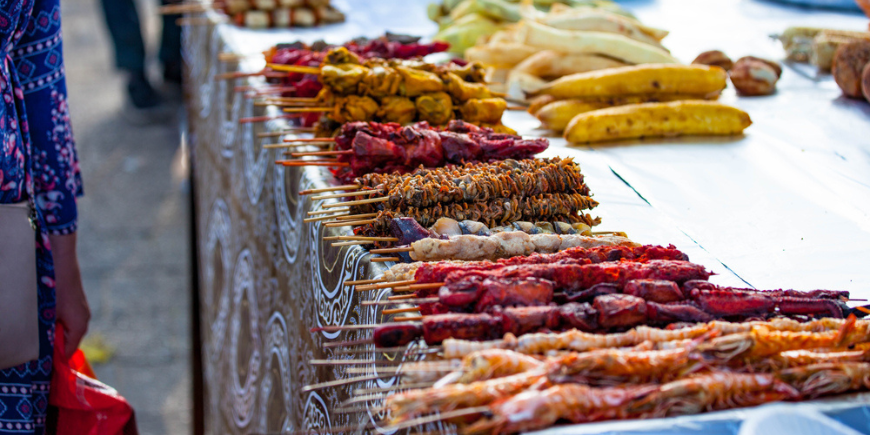
As the sun sets in Stone Town, a remarkable transformation takes place at Forodhani Gardens. Grills sizzle, spices scent the air, and colourful dishes are prepared right before your eyes.
What was once a peaceful park during the daytime becomes a sensory delight, offering an unforgettable street food experience.
Influenced by Middle Eastern, Indian, and African culinary traditions, there are an array of Tanzanian and Zanzibari delicacies on offer at the night market. Among the standout options are seafood kebabs, mantabali (Zanzibari stuffed chapatis), chicken shawarma, Zanzibari pizza, and the refreshing delight of freshly squeezed sugar cane juice infused with lime and ginger.
6. Sunset sailing on a hand-built boat
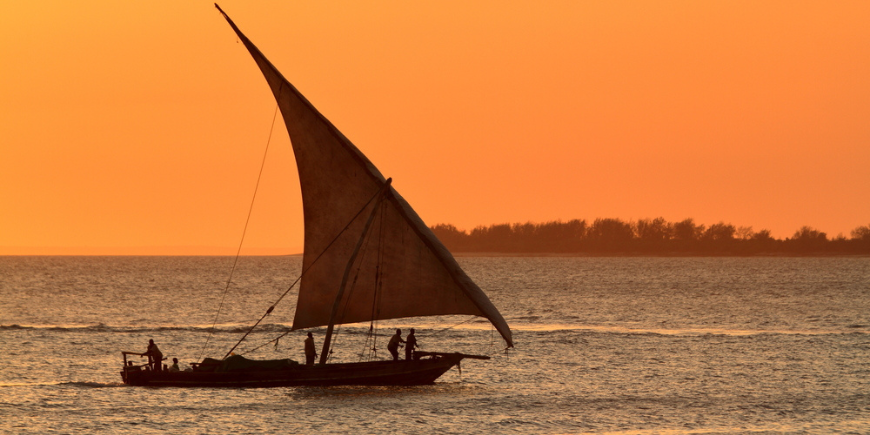
Zanzibar’s traditional hand-made dhow boats were predominantly used for coastal trade and ferrying passengers.
During your visit, you can embark on a full-day boat trip to explore the beauty of Menai Bay and Kwale Island aboard a dhow sailing boat. The crystal-clear waters provide opportunities to spot humpback and bottlenose dolphins.
The highlight of a boat trip comes as the day draws to a close, as a stunning Zanzibar sunset unfolds over the water and the horizon transforms into a canvas of brilliant colours.
7. Dine in the middle of the ocean at The Rock
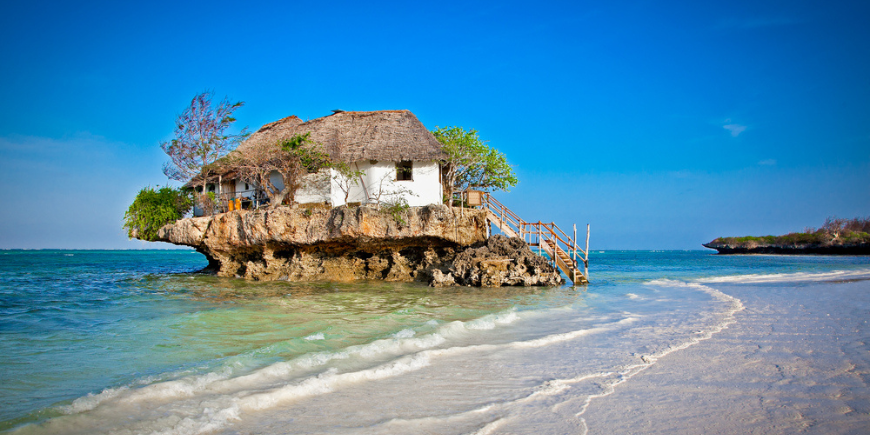
The Rock is an iconic restaurant on the peninsula of Michamvi. Built just off the shore on Pingwe beach atop an existing rock in the ocean, this restaurant has only 12 tables, and offers a largely European menu consisting of fresh seafood, pasta etc.
What truly sets The Rock apart is its exceptional location. Ascending the wooden staircase, you’re greeted by an awe-inspiring panorama of the shimmering turquoise Indian Ocean.
The Rock serves both lunch and dinner, however, its small capacity means it’s a good idea to secure a reservation in advance.
You can choose to visit the island of Zanzibar, as a conclusion to your exhilarating safari in Tanzania or Kenya, or as a delightful reward following your ascent of Kilimanjaro. Just make sure you venture beyond the sand and sea and let Zanzibar’s multifaceted allure etch memories in your heart that will last a lifetime.
TourCompass – From tourist to traveller
